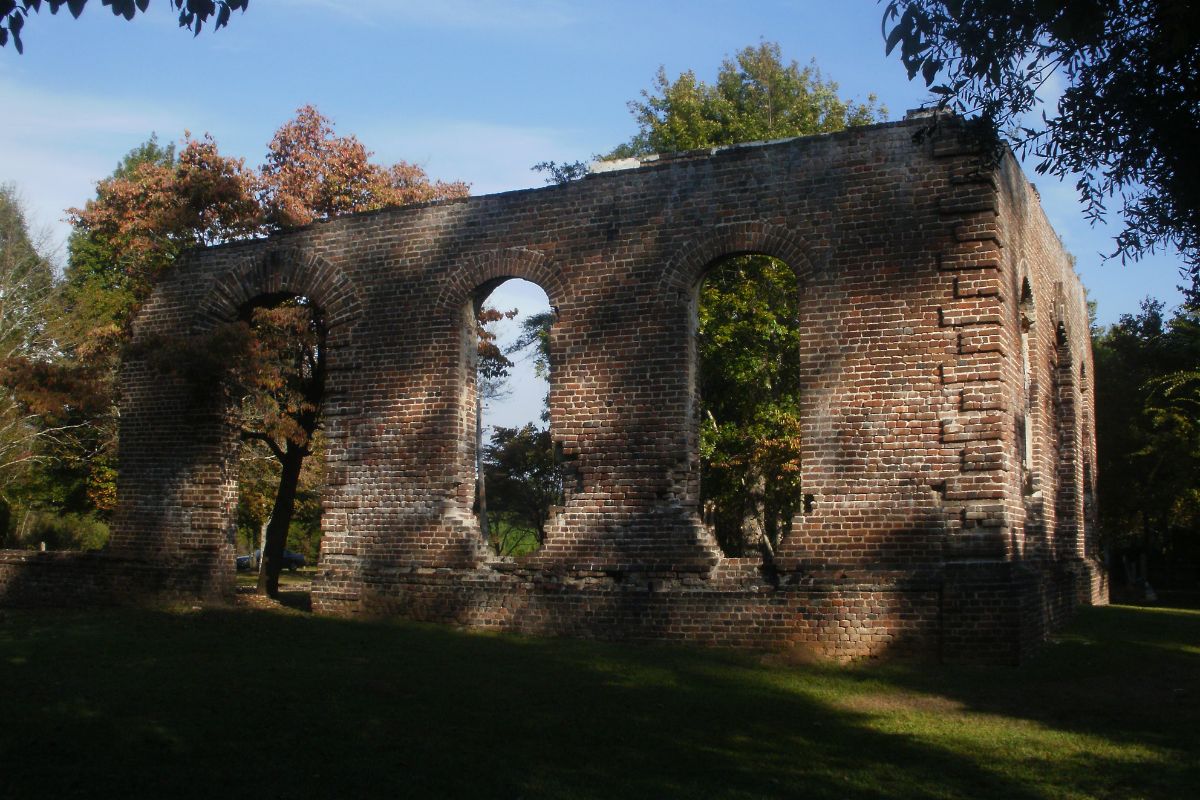Secrets Of South Carolina’s Lowcountry Ruins

Have you ever wondered about the hidden stories behind South Carolina's Lowcountry ruins? These ancient structures hold secrets of the past, waiting to be uncovered. From old plantations to forgotten forts, each ruin tells a tale of history, culture, and mystery. Imagine walking through crumbling walls where once bustling lives thrived. Feel the whispers of the past as you explore these fascinating sites. Whether you're a history buff or just curious, the Lowcountry ruins offer a unique glimpse into a bygone era. Ready to step back in time and discover the magic of South Carolina's hidden gems? Let's dive in!
Discovering the Lowcountry Ruins
South Carolina's Lowcountry is a treasure chest of history, filled with ruins that tell tales of bygone eras. From ancient plantations to old forts, these sites offer a glimpse into the past. Let's explore some of the most fascinating ruins in this region.
Historic Plantations
The Lowcountry is famous for its plantations, many of which have fallen into ruin. These sites provide a hauntingly beautiful look at the area's history.
Old Sheldon Church Ruins
Located near Yemassee, these ruins are what remains of Prince William's Parish Church. Built in the mid-1700s, it was burned during the Revolutionary War and again during the Civil War. The majestic columns and arches still stand, offering a serene and picturesque setting.Magnolia Plantation
Situated near Charleston, Magnolia Plantation dates back to 1676. While the main house has been restored, the surrounding slave cabins and outbuildings remain in various states of decay, providing a stark reminder of the region's past.
Forts and Military Sites
South Carolina's strategic location made it a hotspot for military activity. Many forts and military installations now lie in ruins, each with its own story to tell.
Fort Fremont
Located on St. Helena Island, Fort Fremont was built in the late 1800s to protect the coast during the Spanish-American War. The concrete fortifications and gun emplacements are still visible, making it a fascinating site for history buffs.Castle Pinckney
Situated on Shutes Folly Island in Charleston Harbor, Castle Pinckney was built in 1810. It served various military purposes until it was abandoned in the late 1800s. The crumbling walls and overgrown vegetation give it an eerie, yet captivating, appearance.
Abandoned Towns
Some towns in the Lowcountry have been abandoned, leaving behind ghostly remnants of their former glory.
Dorchester
Near Summerville, the town of Dorchester was founded in the late 1600s. By the mid-1700s, it was largely abandoned. Today, visitors can explore the ruins of St. George's Anglican Church and the old fort, both of which offer a glimpse into the town's past.Ebenezer
Located near Rincon, this town was established by German settlers in the 1730s. It thrived for a time but was eventually deserted. The ruins of the Jerusalem Lutheran Church and other structures still stand, providing a hauntingly beautiful look at the past.
Industrial Ruins
The Lowcountry also has its share of industrial ruins, remnants of the region's once-thriving industries.
Old Santee Canal Park
Near Moncks Corner, this park preserves the ruins of the Santee Canal, one of the first canals built in America. The canal was used to transport goods from the interior to the coast. Visitors can see the old locks and other structures, which are now surrounded by lush vegetation.Stoney-Baynard Plantation
Located on Hilton Head Island, this plantation was established in the late 1700s. The ruins of the main house, slave quarters, and other buildings are still visible, offering a glimpse into the island's history.
Cemeteries and Burial Grounds
Cemeteries and burial grounds in the Lowcountry often contain ruins of old tombs and monuments, each with its own story.
Beaufort National Cemetery
Established during the Civil War, this cemetery contains the graves of Union soldiers, many of whom died in nearby battles. The old tombstones and monuments provide a poignant reminder of the region's turbulent past.Magnolia Cemetery
Located in Charleston, this cemetery dates back to the mid-1800s. It contains the graves of many notable figures, as well as several ruined tombs and monuments. The overgrown vegetation and crumbling structures give it a hauntingly beautiful atmosphere.
Hidden Gems of the Lowcountry
South Carolina's Lowcountry ruins offer a unique glimpse into the past. From the haunting beauty of Old Sheldon Church to the mysterious Stoney-Baynard Plantation, these sites tell stories of a bygone era. Exploring these ruins, you can almost hear the whispers of history. Each location has its own tale, whether it's about the Civil War, early settlers, or the rise and fall of plantations.
Visiting these hidden gems isn't just about seeing old buildings. It's about connecting with the past and understanding the region's rich heritage. Whether you're a history buff or just love a good adventure, the Lowcountry's ruins won't disappoint. Pack your bags, grab a camera, and set out to uncover the secrets of South Carolina's Lowcountry. You'll leave with memories and maybe a few ghost stories to share.

